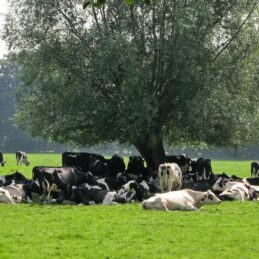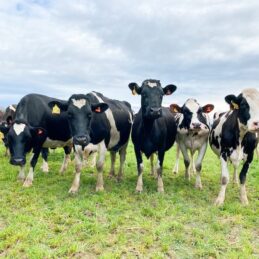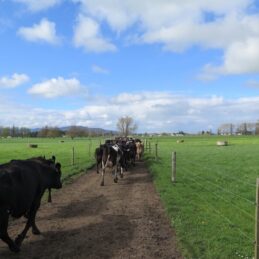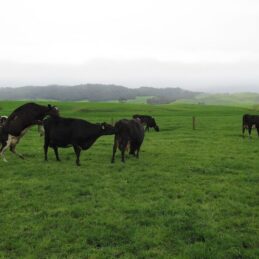Long before milk production or growth rates are affected, heat stress can be detected and recognised by changes in animal behaviour and or cow wearable technologies.
Detecting the signs of heat stress as early as possible and implementing strategies to alleviate the adverse effects of heat stress will help maintain post-peak production and optimal animal health.
The temperature-humidity index (THI) is a standard indicator of heat stress risk (Table 1). That’s because the temperature and the air’s relative humidity combine to exacerbate the heat’s effect.
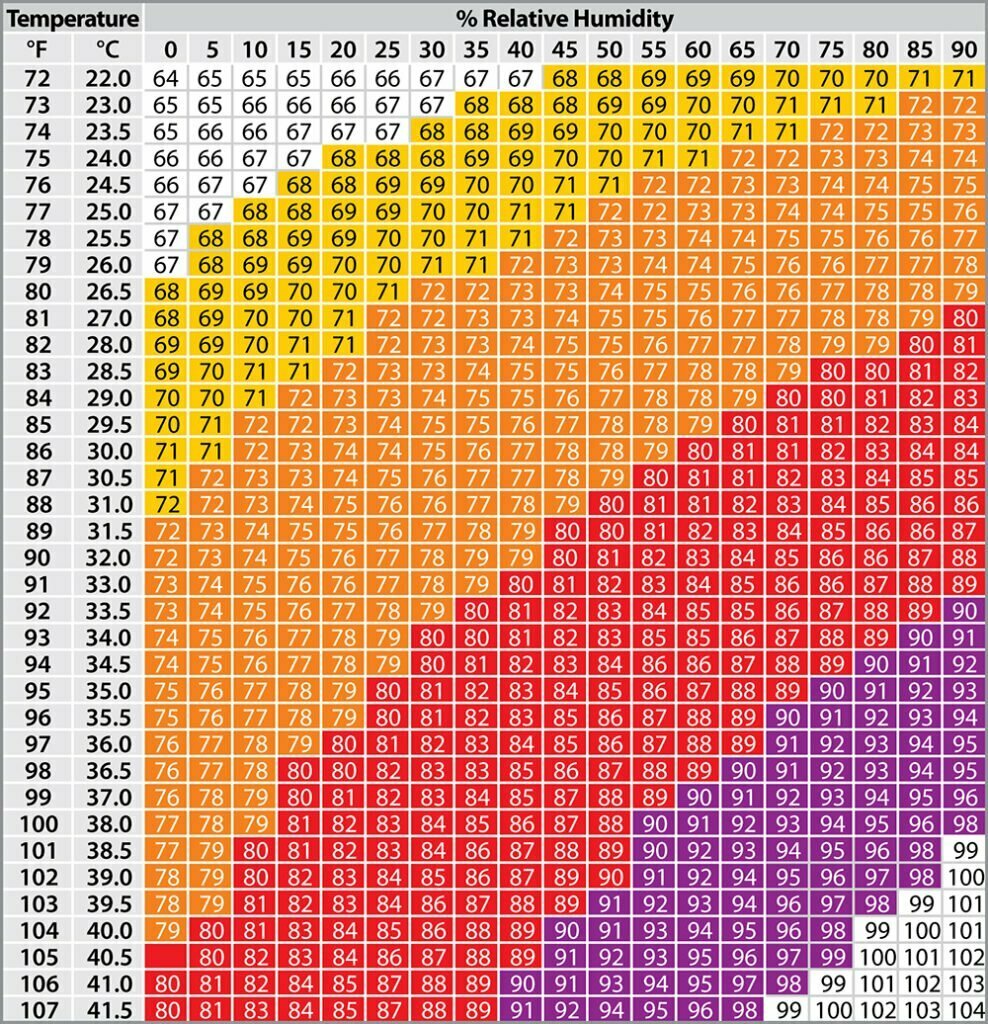
Table 1: THI table (from Burgos & Collier)
The negative impact of heat stress is linked to the THI level and the duration of exposure. For example, the number of hours/day and the number of consecutive days of stress.
- For dairy cows: the heat stress threshold is as low as 68 (Burgos and Collier, 2011). This means that, for example, at 50% humidity, cattle begin to experience the adverse effects of heat stress at 22°C.
- For beef cattle: the heat stress threshold is estimated at 72. This means that at 50% humidity, cattle are exposed to heat stress at 25°C.
- For pre-weaned calves: a heat stress threshold has been set at 78 (Kovacs et al., 2020).
- The thermal neutral zone for sheep is between 12-32°C and for goats is between 12-24°C. Based on THI, the actual threshold for heat stress in dairy sheep and goats is comparable to dairy cattle but can vary depending on breed, housing, and production system.
Animal observation is key to detecting early signs of heat stress
The first signs of moderate heat stress include:
- Shallow breathing
- Increased respiration rate: more than ten breaths per 10 seconds (or 1 breath per second)
- Profuse sweating
- Reduced feed intake
- Reduced lying time: to increase heat dispersion, the animal will spend less time lying quietly (and ruminating). Research has shown a significant drop in lying time over the heat stress threshold
- Decreased rumination activity: there is a correlation between rumination time and rumen function, hence the lowered production performance. In dairy cows, it has been shown that for each 10-point increase in the THI, daily rumination could be reduced by 1 hour and dairy production by 2.7 kg/day or 239 grams of milk solids (MS) (Haan, 2016). We estimate that a good target is to have 50-60% of dairy cows lying and ruminating simultaneously. Under heat stress conditions, rumination is suboptimal in 50% of farms (Lallemand Animal Nutrition internal data, REI audits)
- Erratic feeding behaviour: as digestion produces heat, the animals will tend to eat more at the coolest hours of the day to reduce heat production.
Look out for signs of reduced rumen function
The following signs can indicate poor rumen function: decreased lying and rumination time, loss of saliva through panting, a reduction in meal frequency, and larger meal size, also known as “slug feeding”. The experts at Nutritech can also help farmers measure rumen function on their operation by assessing signs such as:
- Manure colour and consistency. These are effective ways to assess rumen function. For example, the presence of undigested grain is a sign of sub-optimal rumen function, where the animal is not fully digesting precious (and expensive) nutrients.
- Locomotion Lameness can signify poor rumen function and Sub Acute Ruminal Acidosis (SARA) events. Heat stress can exacerbate poor rumen fermentation and function and negatively affect animal behaviour resulting in even worse locomotion scores and higher incidence of lameness.
In small ruminants, heat stress also greatly impacts rumen health.
Consequences on animal performance and health
The reduced rumen function and lower feed intake lead to a reduced energy supply, which impacts performance in all ruminant types:
For dairy cows: milk yield and milk components are reduced. Milk loss is linked to both heat stress levels and duration of exposure: only 4 hours of exposure/day to low heat stress levels already leads to a milk production decrease of 0.094kgMS or $2.13/cow/day (Table 2).
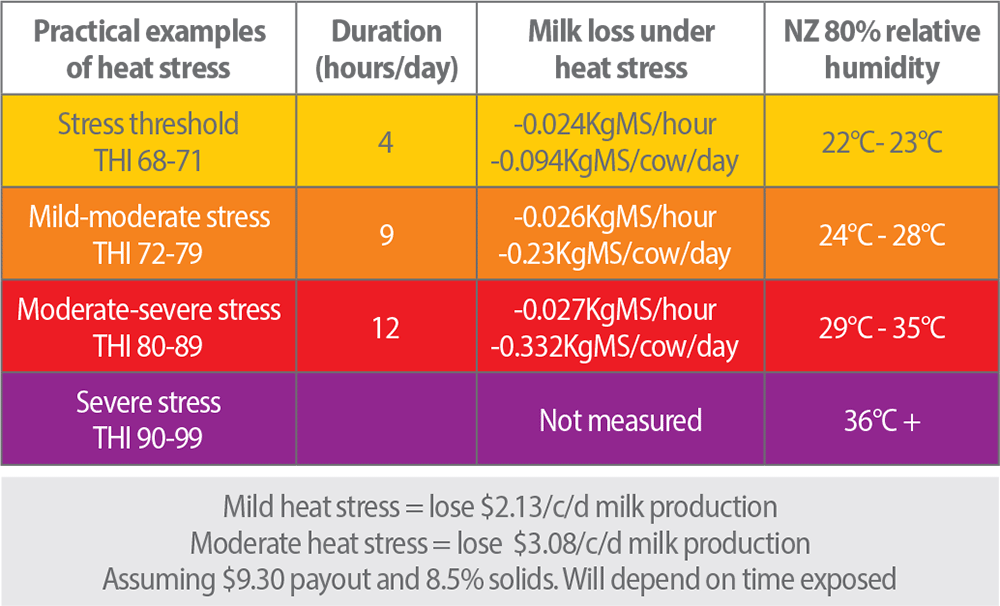
Table 2: Estimated associated milk loss according to the length of exposure to heat stress.
- The decrease in milk production for dairy sheep and goats depends on the breed, production level, and lactation stage. A reduction in milk production of 15% is possible (Cannas, 2007, Salama, 2014). In addition, the decrease in feed intake is often partially compensated by body tissue mobilization.
- For beef cattle: average daily gain drops with increased exposure to heat stress.
- It has also been shown that heat-stressed animals experience increased oxidative stress and lower antioxidant status. This could also negatively affect animal health, immune defences, reproductive performance, and meat quality.
Read the Heat Stress Article here
Effects on Reproductive Performance
While the short-term financial impact of heat stress is substantial longer-term financial losses through poor reproductive performance can be huge. Table 3 shows the flow-on effects of heat stress in both male and female reproductive performance.
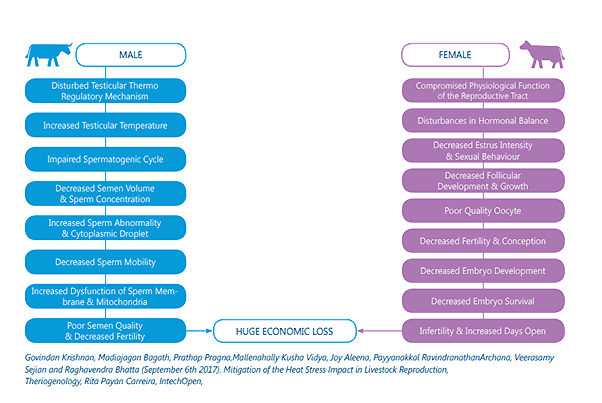
Table 3: Longer term financial impact of heat stress on reproductive performance
Nutritech’s Rumen Health Pack is proven to combat the adverse effects of heat stress:
Nutritech’s qualified nutritionists have developed a heat stress pack that can be added to a blend or mixed over silage to help combat the negative impacts of heat stress. Peter Slade and Alyse Fisher used the Nutritech Heat Stress pack after receiving group heat stress alerts from their CowManager Eartags.

Peter and Alyse use Nutritech’s Rumen Health Pack when they receive group alerts
- Burgos-Zimbelman R. and Collier R.J. Tri-State Dairy Nutrition Conference, April 19 and 20, 2011
- Fustini M., Palmonari A., Durand H., Formigoni A., and Grilli E. 2013. Effect of Saccharomyces cerevisiae CNCM I-1077 (Levucell SC) on rumen pH and milk production during heat stress. J. Anim. Sci. 91 (S2)/J. Dairy Sci. 96 (S1)
- Haan M.M. Using Rumination Sensors to Monitor Heat Stress in Dairy Cows. Penn State Extension, Dairy Herd Management, November 02, 2016
- Kovács L, Kézér FL et al. Short communication: Upper critical temperature-humidity index for dairy calves based on physiological stress variables. J Dairy Sci. 2020 Mar;103(3):2707-2710
- Peana, I., Fois, G., & Cannas, A. (2007). Effects of heat stress and diet on milk production and feed and energy intake of Sarda ewes. Italian Journal of Animal Science, 6(sup1), 577-579.
- Perdomo, M.C. et al. 2020. Effects of feeding live yeast at 2 dosages on performance and feeding behavior of dairy cows under heat stress. J. Dairy Sci., Vol. 103 (1) 325 – 339
- Salama, A. A. K., Caja, G., Hamzaoui, S., Badaoui, B., Castro-Costa, A., Façanha, D. A. E., & Bozzi, R. (2014). Different levels of response to heat stress in dairy goats. Small Ruminant Research, 121(1), 73-79


